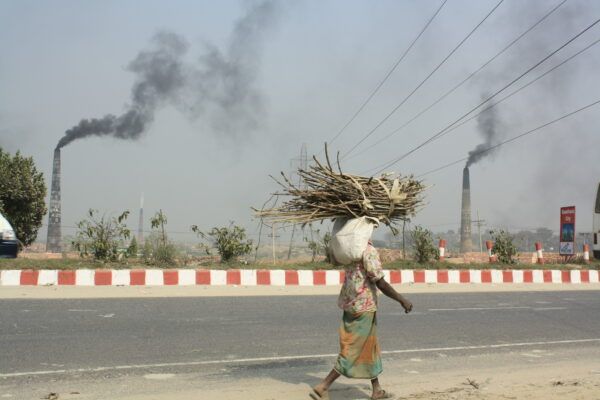The submission of national climate plans this year is a critical chance for countries to show leadership on climate ambition and clean air. Governments will be thinking about how to tackle super pollutants – short-lived climate pollutants, such as methane, black carbon and tropospheric ozone, that have an outsized impact on global warming. What many might not realise is that in doing so, they can achieve near-immediate benefits to public health and the economy, through reduced healthcare costs and improved workforce productivity.
Why Nationally Determined Contributions (NDCs) are critical in 2025
Under the UN Paris Agreement, countries need to submit updated national climate plans – known as Nationally Determined Contributions (NDCs) – every five years, each time increasing in ambition. As a cross-government effort, these plans are a strong tool to integrate climate measures with national development, air quality and health improvements, and to attract investment.
Yet only 16% of the national climate plans submitted in the last round (by 2022) included standalone targets, measures or policies to reduce super pollutants – strong warming agents that damage residents’ health, as well as that of the planet.
Countries are behind schedule to submit their plans. Only 12 countries did so ahead of the original deadline, leading UNFCCC Executive Secretary Simon Stiell to extend the deadline for countries to allow time to develop “first-rate” climate plans by September 2025. Of the 12 submitted so far, there are mixed levels of ambition on air quality and health, according to the Global Climate and Health Alliance’s rapid analysis, suggesting this extra time is very much needed.
Joined-up action on climate and clean air brings greater economic benefits
It’s clear that many countries are struggling to find the political will to produce high quality plans – not least because they would lack the funds to implement them. The withdrawal of USAID funding, and reduction of aid budgets globally, combined with a cost-of-living crisis in many countries puts more pressure than ever on ensuring that climate action is cost effective. Action on super pollutants, and air quality more generally, is one case where investment can achieve several goals.
The sources of climate change – primarily the burning of fossil fuels – are the same as the sources of most air pollution, so many of the solutions are shared too. Government departments can use national climate plans to introduce integrated measures that tackle air pollution and climate change together, while also improving public health.
Air pollution is the greatest external threat to human health worldwide, causing over 8 million premature deaths each year. Globally, it is responsible for an estimated $8.1 trillion in annual health costs, a 6.1% reduction in GDP and 1.2 billion workdays lost each year. Leaders can’t afford to overlook air quality anymore.
The dual benefit of climate and clear air projects is not yet being exploited: less than 3% of international public climate finance went to clean air projects between 2018 to 2022.
As a roadmap of country plans, NDCs can be used to attract investment for climate projects. Integrating air quality and health into these plans can help to unlock critical funding. A study on Joined up Action on Air Pollution and Climate Change showed that, with air quality benefits considered, the climate actions that have a positive return on investment increased from 16 gigatonnes to 24 gigatonnes of carbon removal annually.
Super pollutants are a major opportunity
Alongside carbon dioxide, super pollutants are driving global warming – estimated at nearly half of global warming to date. Many of these pollutants also degrade air quality and have devastating impacts on human health – specifically methane, black carbon (or soot) and tropospheric ozone.
These super pollutants are far more potent than carbon dioxide per tonne. Many remain in the atmosphere for a much shorter amount of time than carbon dioxide (for example, black carbon is in the atmosphere for only 4-12 days). This means that cutting super pollutants can reduce warming four times faster than reducing carbon dioxide alone.
Some super pollutants are emitted from sectors that aren’t prioritised in efforts to reduce carbon dioxide – such as improving organic waste management to reduce methane and black carbon emissions. Targeted action to tackle super pollutants is critical to avoiding the worst effects of climate change before 2050, alongside efforts to decarbonise.
The way forward for NDCs
In updating their national climate plans, leaders have an opportunity to drive near-immediate benefits on health and the economy, and deliver clean air for all.
To maximise the health benefits from emissions reduction, countries should integrate their approaches to reducing and measuring air pollutants and greenhouse gases. Ghana’s national climate plan is an example of this joined-up approach to climate and clean air. The Climate and Clean Air Coalition’s detailed guidance explains how to integrate super pollutants and air pollution measures into national climate plans.
The gold standard for super pollutants in national climate plans is to integrate methane emissions reductions within the economy-wide greenhouse gas target and to set separate, ambitious targets on black carbon and tropospheric ozone precursor emissions.
These targets should be additional to existing efforts and include details for implementation, such as financing arrangements. There are examples already out there: countries including Colombia, Côte d’Ivoire and Mexico have led the way on integrating black carbon reduction measures into their climate plans.
To make the plans even more comprehensive, countries can also set targets in different high-emitting economic sectors. These might include targets for eliminating high-emitting diesel vehicles and introducing electric vehicles, or supporting the shift from kerosene to cleaner fuels in households. Our brief on integrating black carbon into NDCs has more examples of sectoral measures.
At Clean Air Fund, we are supporting countries to include super pollutants, air pollution and health elements in their national climate plans. We’re also working alongside expert partners to ensure that comprehensive and useful guidance is available, so make sure you keep up to date with our efforts.
By integrating air quality and super pollutants into NDCs, governments can create the “first-rate” NDCs called for by Simon Stiell – showing leadership on climate change while maximising health and economic benefits for the public.


